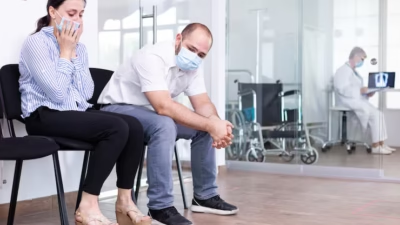Talking about mental health is easier today than it was a generation ago, but stigma still lingers in many homes and communities. Families sometimes avoid these conversations out of fear, shame, or misunderstanding, which only keeps people from getting the help they need. The truth is that silence feeds stigma, while openness helps break it down. When families learn to speak honestly, seek professional guidance, and support each other with compassion, the cycle of shame can give way to healing. Let’s explore six ways to start making that shift for yourself and your loved ones.
Facing Stigma Through Mental Health Interventions
There are times when concern for a family member goes beyond private talks and supportive gestures. That’s where structured guidance can make a difference. Mental health interventions provide a thoughtful and organized way to help someone recognize the seriousness of their condition and consider treatment. These interventions aren’t about blame; they’re about creating a safe setting with the help of an interventionist who knows how to navigate emotional tension.
For families who feel stuck, an intervention can move the conversation forward in a way that feels caring but firm. Instead of letting fear of stigma keep a loved one from care, a planned intervention shows them that their wellbeing matters enough for the family to act together.
Understanding how Mental Health Professionals can Help
Stigma often survives because people don’t understand what different kinds of help are available. The truth is that mental health professionals play a variety of roles, and knowing what they do can make the process less intimidating. Therapists may focus on talk-based strategies for coping, psychologists may provide assessments and structured therapies, while psychiatrists are able to prescribe and monitor medication.
Social workers often connect families to resources, and counselors can provide ongoing support for daily challenges. When families learn about these roles, the idea of seeking help stops feeling abstract. It becomes clear that support is available at many levels, and that no one has to face recovery alone. This awareness can shift the narrative from stigma to practical action.
Creating Open Conversations at Home
One of the most powerful ways to push back against stigma is to start within your own household. If children grow up hearing that mental health matters as much as physical health, they learn not to hide their struggles. If partners and siblings can talk openly about stress, anxiety, or depression without judgment, it reduces secrecy. This doesn’t mean every conversation needs to be heavy. Sometimes it’s as simple as asking “How are you really doing?” and then listening with care. Families that normalize these talks create a ripple effect. Openness makes it safer to reach for help and builds trust that struggles will be met with empathy instead of shame.
Recognizing the Role of Culture and Beliefs
Stigma doesn’t exist in a vacuum. It’s often shaped by cultural expectations, family traditions, or deeply held beliefs. In some cultures, seeking mental health treatment is seen as weakness, while in others it might be viewed as unnecessary if faith or community ties are strong. Recognizing these influences helps families approach the topic with sensitivity.
Instead of dismissing cultural values, the goal is to honor them while also creating space for professional support. When you can say, “We value our traditions, but we also value your health,” you show that caring for mental wellbeing doesn’t have to conflict with family identity. This balance can help reduce resistance and open new paths toward acceptance.
Supporting Each Other Without Judgment
Families thrive when they learn to respond with compassion instead of criticism. Stigma often creeps in through small comments, like suggesting someone should “just snap out of it” or minimizing their symptoms. Shifting to language that validates someone’s experience makes a big difference. Saying things like, “I can see this is really hard for you,” creates safety instead of shame.
It’s also about recognizing your own limits and not trying to fix everything. Support sometimes means standing beside a loved one while they take professional steps toward healing. When families commit to encouragement instead of judgment, the stigma loses power.
Modeling Acceptance for the Next Generation
Breaking stigma isn’t only about the present. It’s also about the messages passed down to children and young people. If kids see adults hiding struggles or mocking mental health conversations, they learn to do the same. But if they see openness, acceptance, and respect for professional help, they internalize a different message.
Parents who talk about therapy in the same way they talk about doctor visits send a signal that care is normal and healthy. Modeling acceptance shapes future generations to approach mental health with curiosity instead of fear. Over time, these small shifts in family culture can change the larger conversation in communities as well.
![7 Must-Have Digital Tools for Physical Therapy Practices [2025 Guide] 1 Physical Therapy Practices](https://divingdaily.com/wp-content/uploads/2025/10/Physical-Therapy-Practices-400x225.jpg)

